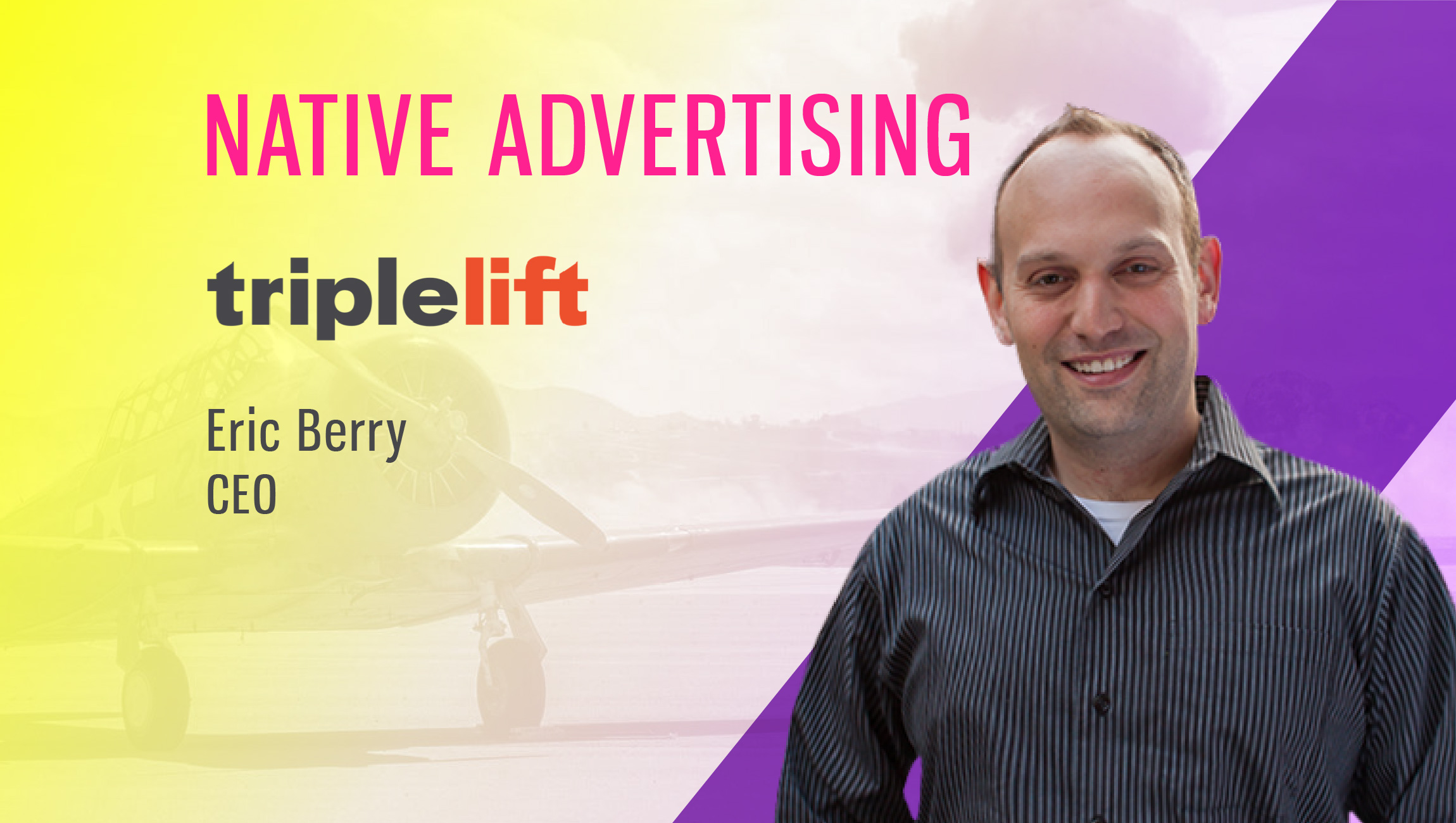Eric Berry
Co-founder and CEO, TripleLift
Earlier this month, Google announced its header bidding exchange partners through Exchange Bidding. The partnership community includes TripleLift, a leader in Native and Programmatic advertising. To better understand how advertisers and publishers could benefit from Google Exchange Bidding to monetize their display ad inventory, we spoke to TripleLift’s CEO, Eric Berry.
Html code here! Replace this with any non empty text and that's it.
Tell us about your role at TripleLift and the team/technology you handle.
I am the CEO at TripleLift. The TripleLift technology platform includes a real-time exchange, an in-house buying platform, a proprietary computer vision platform, a machine learning platform for delivering high-quality brand outcomes and an AI system to maximize the quality of our native publisher placements.
How do you define ‘Customer Experience’ at TripleLift?
We think about our three stakeholders: users, publishers, and marketers. For us to be successful, we want effective, user-centric publisher monetization through advertising – wherever users consume content. We focus extensively on every stage of this mission. Effective means the advertising needs to work – the ads need to be dynamically constructed in just the right way to ensure that they’re integrated with the publisher’s user experience. They also need to be targeted and rendered in a way that drives value for the marketer. The user-centric part of our mission requires a strong focus on the consumer of content. We think about things like the speed of the page load, long-term user retention and, ultimately, whether we’re delivering ads that we’re proud of and that create a sustainable publisher monetization ecosystem.
How could advertisers and publishers benefit from Google Exchange Bidding to monetize their display ad inventory? How does this partnership with Google impact your roadmap in adtech?
Exchange Bidding is, for many publishers, the most straightforward way to add monetization partners. Google handles billing, payments and discrepancies, meaning the publisher receives a reduced cost, rather than adding additional exchanges and SSPs. The challenge, however, is the opacity of the system and the additional fees added by Google itself, as well as some missing functionality. Header bidding‘s success has been tied closely to the transparency of the platforms that ensure the highest price is paid in a fair manner. Google has been a great partner in Exchange Bidding, and publishers and advertisers would benefit greatly if it made the same commitments to transparency and equity, as it would create a substantially more vibrant marketplace.
TripleLift’s priority is creating effective, user-centric publisher monetization wherever users consume content. This defines our roadmap, so we are delighted that our partnership with Google enables us to pursue additional channels of user content consumption.
At TripleLift, how do you measure your Native Advertising performance?
Native Advertising performance fundamentally is measured in terms of our core constituents. Is it effective for advertisers – meaning does it deliver ROI based on the brand’s individual metrics? Does it deliver value for our publishers – meaning how does it affect user retention and overall engagement with their content? And finally, is it creating a good user experience? We’re constantly experimenting to maximize the value that each of our stakeholders get out of our platform.
How would the header bidding ecosystem evolve with TripleLift’s participation in Exchange Bidding?
Exchange Bidding may fundamentally change header bidding. It provides publishers with arguably the simplest channel to add additional monetization partners – directly through their ad server. TripleLift is the first partner to provide true native capabilities, including proprietary rendering and optimization technology.
What are your predictions on programmatic advertising against ad metrics, viewability, and transparency? How does TripleLift deliver all these to the customers?
Programmatic advertising has evolved from optimizing to simple performance metrics, to more sophisticated measures of marketer success. For most brands, ensuring that the right ad is delivered to their target demographic, in a brand-safe and relevant context, and in a way that their advertising is not just viewable – but actually seen – is the goal. We expect ad metrics to continue to evolve to track how a brand’s spend achieves these goals.
What is your take on AI/Machine Learning disrupting the Programmatic Advertising technologies by 2020
AI and machine learning are exceptionally powerful tools to extrapolate patterns from existing data. These patterns can be applied to automated decision-making. As AI and machine learning become more powerful, so does the type of pattern that can be drawn. Early programmatic machine learning simply finds types of inventory that could drive better clicks, but this will evolve to include buying strategies and higher orders of optimization. Some of the more mundane tasks of traders will be automated, allowing them to focus on ever-more complex tasks.
Thanks for chatting with us, Eric.
Stay tuned for more insights on marketing technologies. To participate in our Tech Bytes program, email us at news@martechseries-67ee47.ingress-bonde.easywp.com











